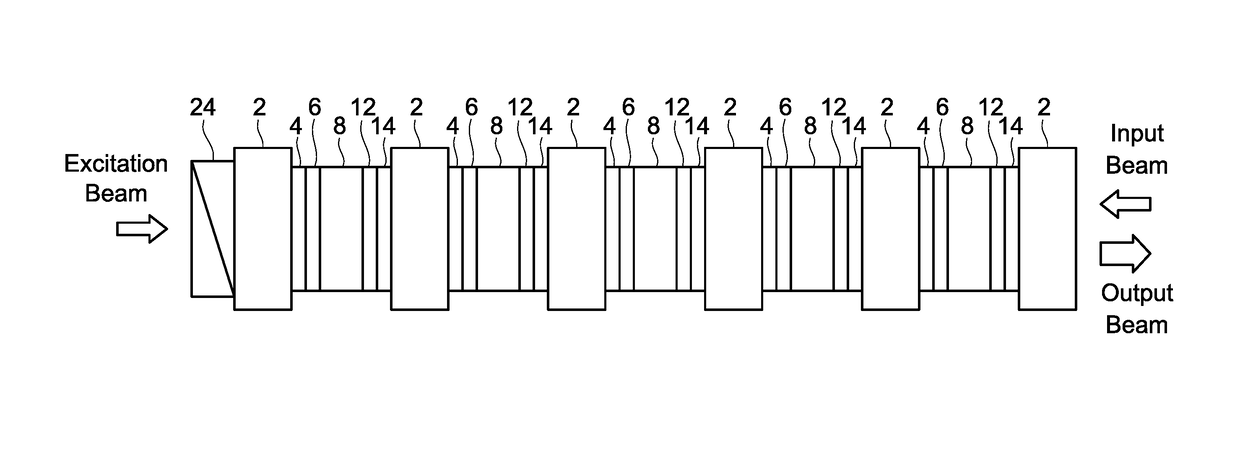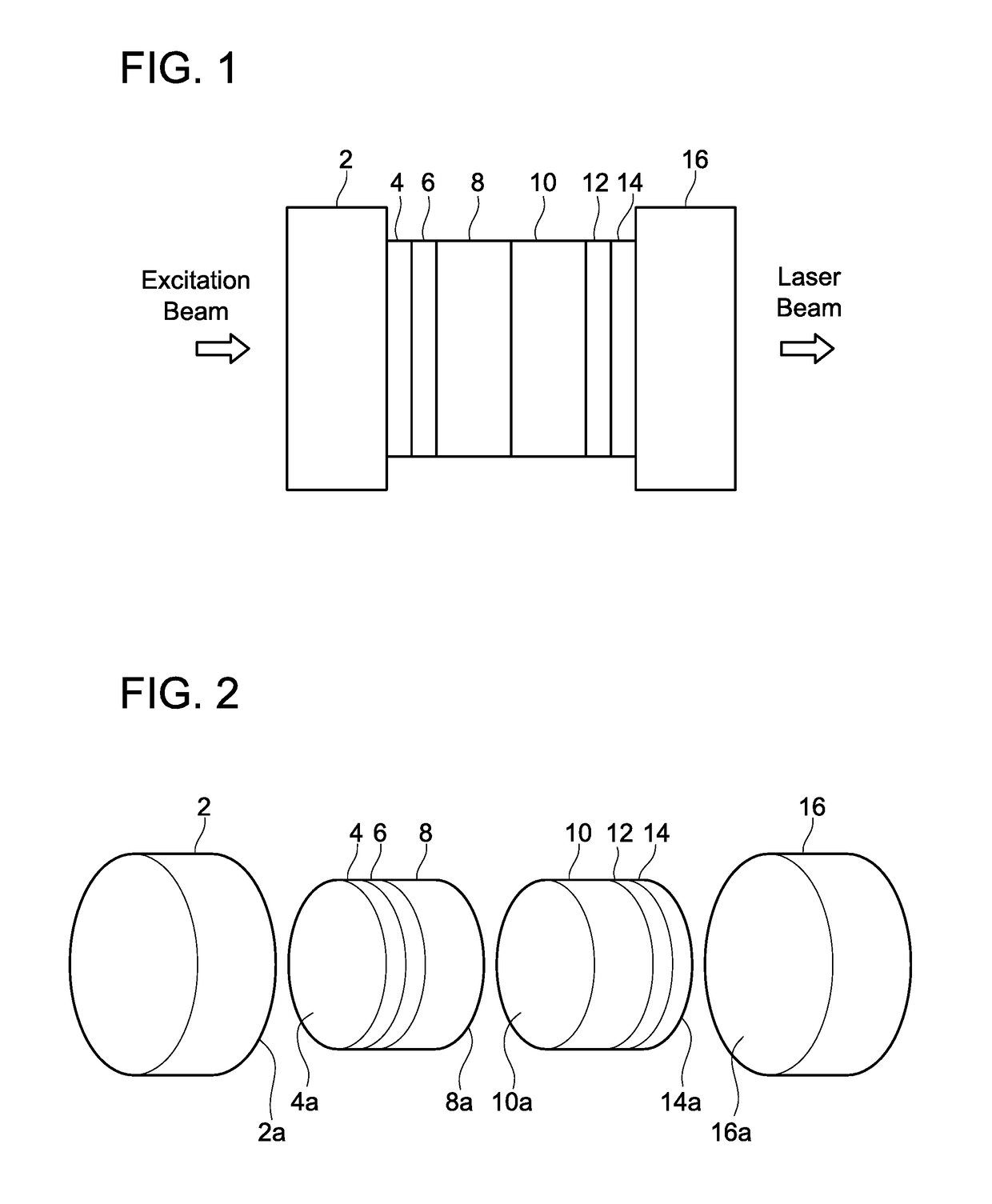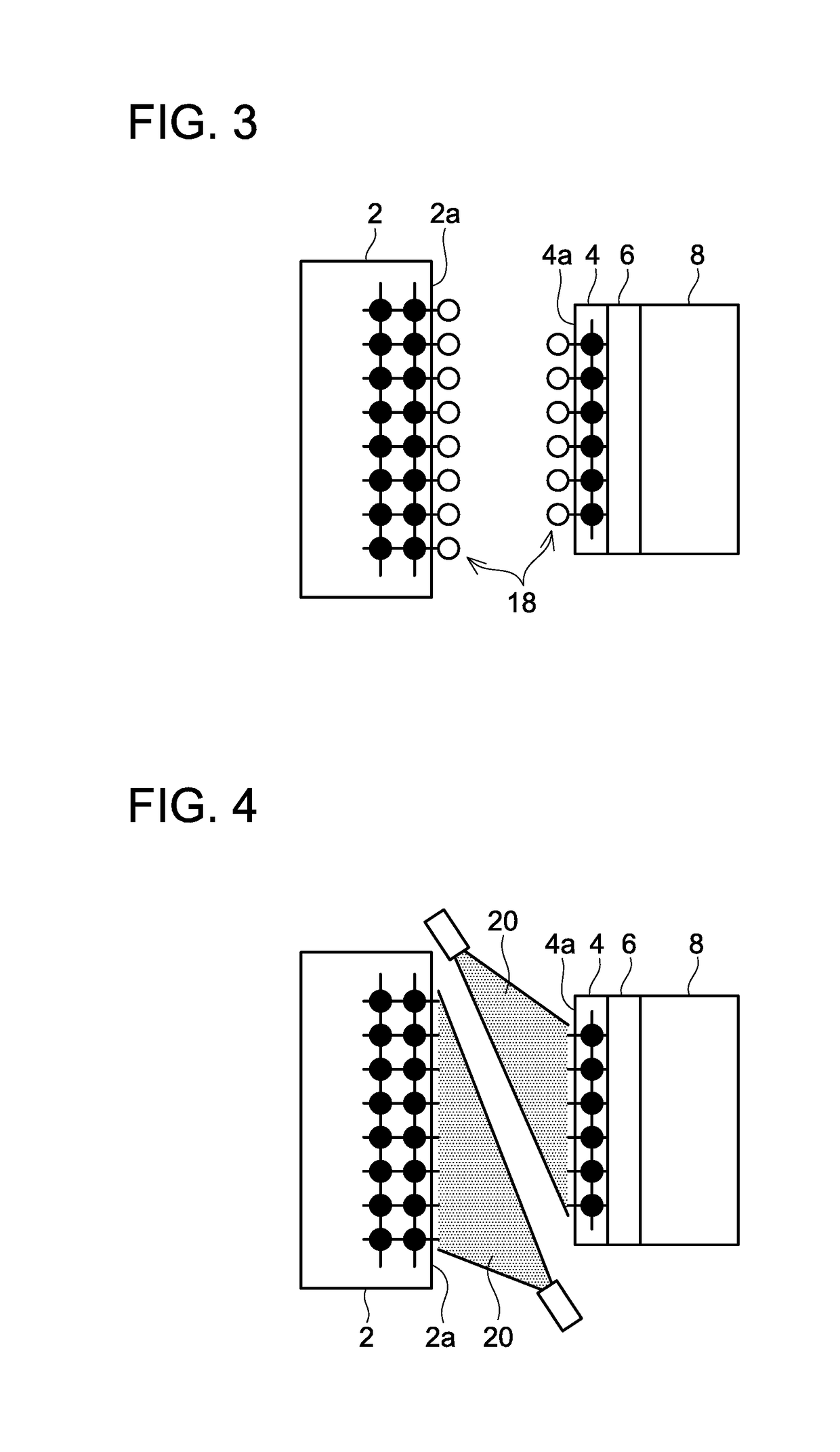Laser apparatus and manufacturing method thereof
a technology of laser equipment and manufacturing method, which is applied in the direction of laser details, active medium materials, laser cooling arrangements, etc., can solve the problems of reducing the light emission performance of the laser medium, reducing the intensity of the laser beam that can be outputted from the laser medium, and not being able to increase the laser beam intensity to the required level, etc., to achieve the effect of reducing the length of the resonan
- Summary
- Abstract
- Description
- Claims
- Application Information
AI Technical Summary
Benefits of technology
Problems solved by technology
Method used
Image
Examples
embodiments
First Embodiment: Pulse Laser Apparatus
[0059]FIG. 1 shows a side view of a pulse laser apparatus of a first embodiment, and FIG. 2 is a disassembled perspective view thereof. Reference sign 2 shows a first heat sink, reference sign 8 shows a laser medium, reference sign 10 shows a saturable absorber, and reference sign 16 shows a second heat sink. The laser medium 8 emits light when excitation beam enters therein through the first heat sink 2, and pulse laser beam is discharged through the second heat sink 16.
[0060]Reference sign 6 shows a first end coat, having a low reflectance to the excitation beam and a high reflectance to the laser beam. Reference sign 12 shows a second end coat, having an intermediate reflectance to the laser beam. That is, a part of the laser beam is reflected therein and another part of the laser beam permeates therethrough.
[0061]The laser medium 8 emits light when the excitation beam enters therein. The saturable absorber 10 has an absorbing ability that i...
second embodiment
Apparatus
[0073]FIG. 7 shows a multilevel laser apparatus of a second embodiment, which is a multilevel laser amplifier that aligns a plurality of laser media 8 linearly in multiple levels. Each of the laser media 8 emits light when excitation beam and input beam (seed light) enter therein, and amplified laser beam of the input beam is output. Films 6 and 12 adjusted to an intermediate reflectance to laser beam are provided on both surfaces of each laser medium 8.
[0074]A heat sink 2 is inserted between each pair of adjacent laser media 8, 8. The heat sinks 2 have a higher thermal conductivity than the laser media 8, and are configured to allow the excitation beam, the input beam, and the laser beam to permeate therethrough.
[0075]Reference signs 4 and 14 show heat sink like layers intervened between the heat sinks 2 and respective ones of the end coats 6, 12, and the presence of these same-material layers allows the heat sinks 2 and the laser media 8 to be joined by room temperature b...
third embodiment
Multi-Reflection Laser Apparatus
[0080]FIG. 8 shows a laser apparatus of a third embodiment, and excitation beam reflected in the laser medium 28 is reflected again to re-enter the laser medium 28. The laser medium 28 is thin (its distance along an average progressing direction of the excitation beam (x axis) is short), and as such, the excitation beam is not sufficiently absorbed by merely reciprocating within the laser medium 28 just once, thus the excitation beam is reflected in multi paths.
[0081]Reference sign 2 shows the heat sink, which is transparent to the excitation beam of 808 nm. Reference sign 4 shows the heat sink like layer, 6 shows the first end coat, 28 shows the laser medium (which is thinner than the laser medium 2 of the first and second embodiments), 30 shows the second end coat, and 32 shows an output coupler.
[0082]The first end coat 6 has a low reflectance to the excitation beam, and a high reflectance to the laser beam. The second end coat 30 has a high reflect...
PUM
| Property | Measurement | Unit |
|---|---|---|
| thickness | aaaaa | aaaaa |
| diameter | aaaaa | aaaaa |
| thermal conductivity | aaaaa | aaaaa |
Abstract
Description
Claims
Application Information
 Login to View More
Login to View More - R&D
- Intellectual Property
- Life Sciences
- Materials
- Tech Scout
- Unparalleled Data Quality
- Higher Quality Content
- 60% Fewer Hallucinations
Browse by: Latest US Patents, China's latest patents, Technical Efficacy Thesaurus, Application Domain, Technology Topic, Popular Technical Reports.
© 2025 PatSnap. All rights reserved.Legal|Privacy policy|Modern Slavery Act Transparency Statement|Sitemap|About US| Contact US: help@patsnap.com



